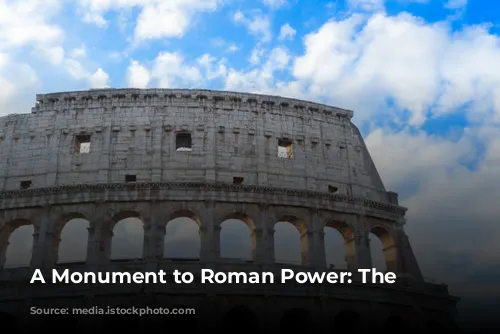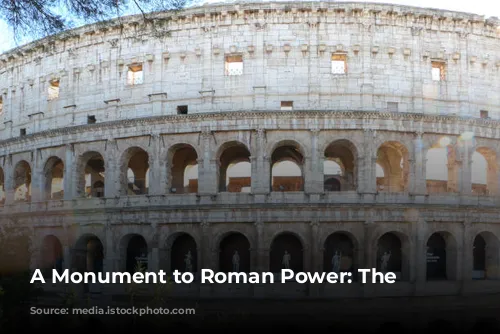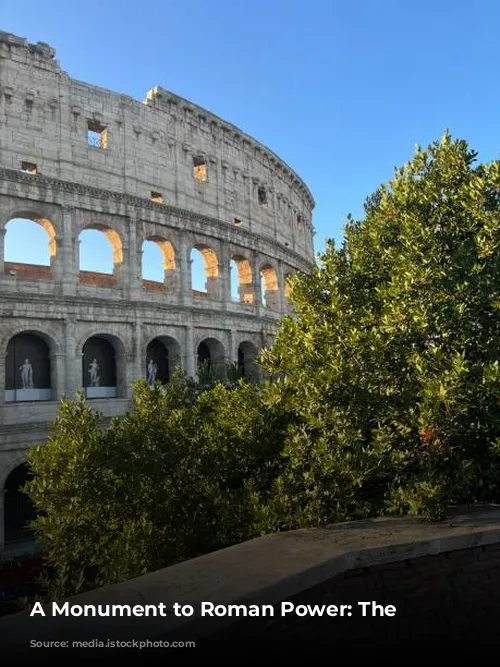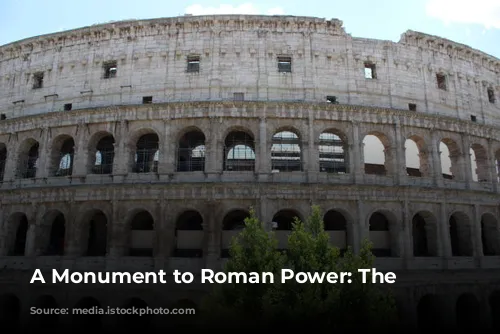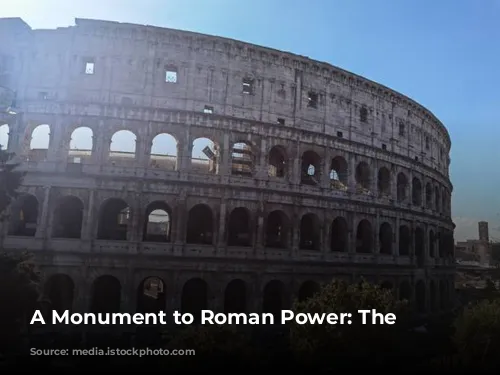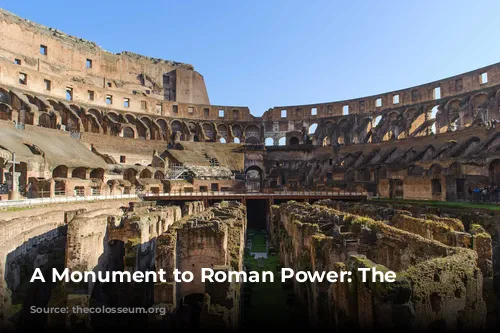The Colosseum stands as a testament to the ingenuity and power of ancient Rome. It is the largest Roman amphitheater in the world, a majestic structure that has withstood the ravages of time. Despite enduring numerous fires, earthquakes, and other disasters, the Colosseum still stands today, a testament to its enduring strength.
This article will explore the construction, features, and significance of this iconic building, shedding light on its complex history and enduring legacy.
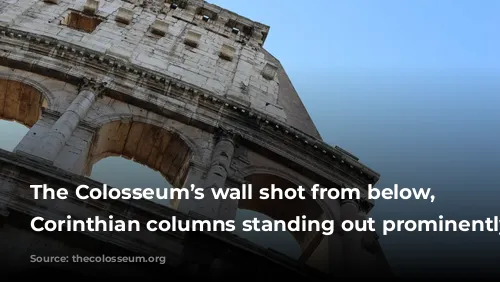
The Colosseum: A Monument to Flavian Power
The Colosseum was built during the reign of the Flavian emperors – Vespasian, Titus, and Domitian – between 70 and 80 AD. Initially known as the Amphitheatrum Flavium, it was a symbol of Flavian power and a means for Vespasian to regain the favor of the Roman citizenry after the tumultuous reign of Nero. The Colosseum was built on the site of Nero’s artificial lake, part of his lavish Domus Aurea, signifying a shift in imperial priorities from extravagance to public spectacle.
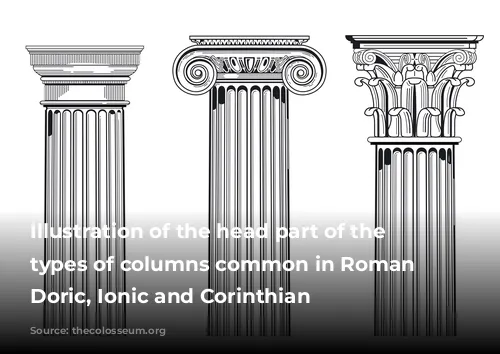
A Labor of Slaves and Skilled Craftsmen
The construction of the Colosseum was a monumental undertaking, requiring a massive workforce. Jewish slaves, captured during the First Jewish-Roman War, were forced to labor on the project, alongside skilled Roman workers.
The Colosseum’s oval shape, with its northwest to southeast axis, was a masterpiece of Roman engineering. Its enormous dimensions, almost twice as long and one and a half times as wide as a modern football field, were a testament to the ambition of its creators.
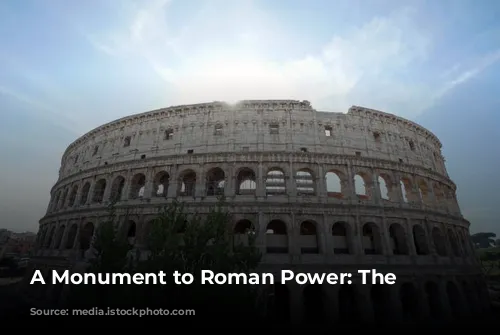
A Triumph of Stone and Engineering
The Colosseum was built from 100,000 cubic meters of travertine stone, a type of limestone quarried near modern-day Tivoli. Roman cement, bricks, and tuff blocks were also used, creating a sturdy and enduring structure. To bind the massive blocks together, an estimated 300 tonnes of iron clamps were used. These clamps were later scavenged, leaving behind distinctive pockmarks on the Colosseum’s walls.
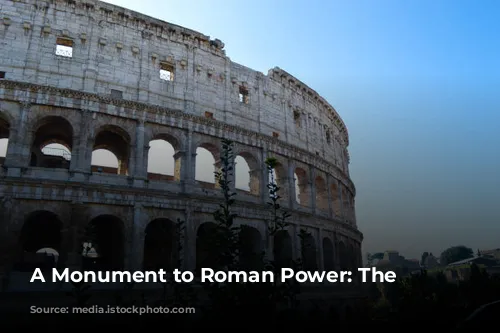
A Majestic Structure: From the Ground Up
The Colosseum was designed to impress, a grand monument to Rome’s might. The use of white travertine stone and the building’s imposing height (nearly 50 meters, dwarfing most other buildings of the time) ensured that the Colosseum would be a spectacle to behold.
The Colosseum embodied Roman architectural excellence. It featured all three major architectural orders of the time: the Tuscan on the ground floor, the Ionic on the second floor, and the Corinthian on the third floor. This gradual increase in stylistic complexity added to the building’s majesty.
The 80 arches that formed the external perimeter of the building also reflected this increase in scale, with the largest arches found on the ground floor. The fourth floor of the Colosseum was different, made of flat panels rather than arches and columns. Recent cleaning efforts have revealed that these panels were once decorated with carvings and insets of azurite and bronze, adding another layer of artistry to the building.
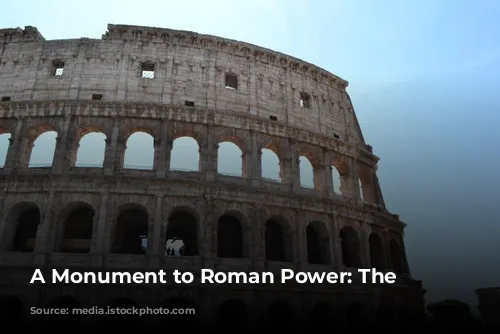
Accessing the Arena: Gates of Triumph and Mourning
The Colosseum had two main entrances. The northwestern Porta Triumphalis was used for triumphal processions and for gladiators entering the arena, while the southeastern Porta Libitinaria served as the exit for the bodies of those who perished in the arena, named for the Roman goddess of funerals and burials, Libitina.
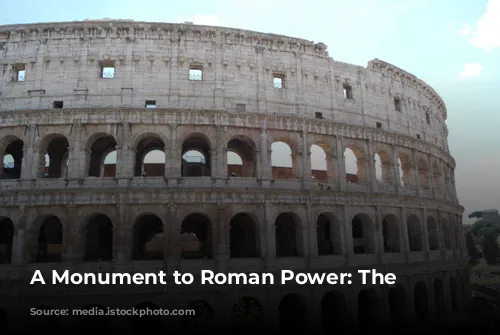
The Heart of the Colosseum: The Arena
The arena, the focal point of the Colosseum, was the stage for gladiator combat, animal hunts, and other spectacles. Measuring 83 meters in length and 48 meters in width, the arena was covered with a layer of sand, drawn from the nearby Monte Mario hill. The sand served to absorb blood and dust, making it a practical and symbolic element of the arena.
Hidden beneath the surface were numerous trap doors, used to introduce and remove elements of the spectacle, creating dramatic and unexpected moments for the audience. A 10-foot wall surrounded the arena, leading to the first level of seats.
The arena wall was built from red and black stone blocks, creating a striking contrast with the white travertine stone of the rest of the building. This color contrast mirrored the blood and death that took place on the arena floor.
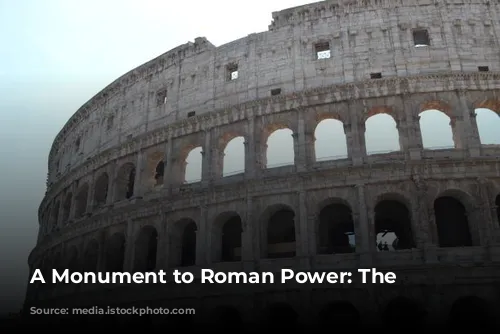
A Theatre of Social Hierarchy: The Cavea
The terraces or bleachers, collectively known as the cavea, were the seating area for the spectators. The cavea was divided into three tiers, reflecting the social hierarchy of Roman society.
The podium, the lowest tier, was reserved for the most prominent Romans, including senators and high-ranking officials. As the cavea ascended, the social status of the spectators decreased, with the top tier reserved for Roman citizens of lower social standing, including the poor.
Each seat, made from travertine stone, was approximately 40 centimeters wide. Wealthier spectators would bring cushions to make their seats more comfortable. The Colosseum could accommodate an estimated 80,000 spectators, creating a vibrant and dynamic atmosphere during its events.
The cavea was also divided horizontally by access points for the public: scalaria (stairs) led to the stands, while vomitoria (passages) connected the cavea to the exterior. Contrary to popular belief, vomitoria were not spaces for vomiting, but rather passages that “spewed forth” spectators.
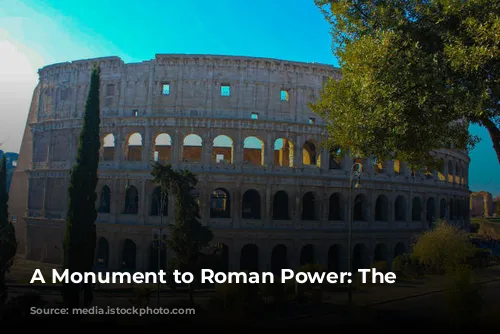
The Colosseum’s Secret: The Hypogeum
While the arena was the most distinctive feature of the Colosseum, the hypogeum was its most important. The hypogeum, a network of tunnels and chambers distributed in two levels, served as a holding area for gladiators and animals before they were brought up to the arena.
This underground network was not part of the original design but was added later by Emperor Domitian, after the Colosseum had been inaugurated. Eighty vertical shafts connected the hypogeum to the arena above, allowing gladiators and animals to be easily raised to the arena floor. Some of these shafts incorporated a system of large moving platforms called hegmata, used to transport large beasts, such as elephants, up and down.
The hypogeum was connected to the outside world through a network of underground tunnels, leading to the gladiators’ barracks and nearby stables where animals were kept. The Colosseum also featured a private access tunnel for the Emperor, allowing him to enter and exit the building safely and avoiding the large crowds.
The construction of the hypogeum made it impossible to flood the arena and therefore hold naumachia (mock naval battles), which had been held twice before its construction.
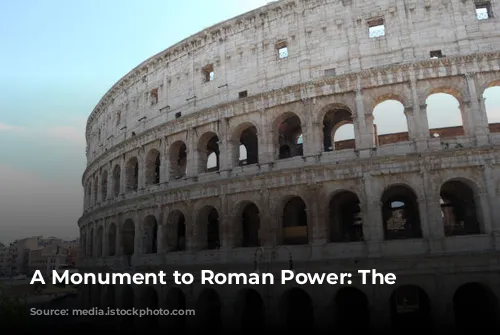
Conclusion
The Colosseum stands as a monument to Roman engineering, architecture, and social hierarchy. It was a place of entertainment, spectacle, and death, where gladiators fought and died, and animals were hunted for the amusement of the Roman public. The Colosseum also embodied the power and ambition of the Roman Empire, a structure built to impress and inspire awe in its viewers.
Today, the Colosseum is a UNESCO World Heritage Site, a popular tourist destination, and a symbol of the enduring power of Rome. It serves as a reminder of the past, a testament to the ingenuity and creativity of the ancient Romans, and a reminder of the complexity and contradictions of Roman society.
